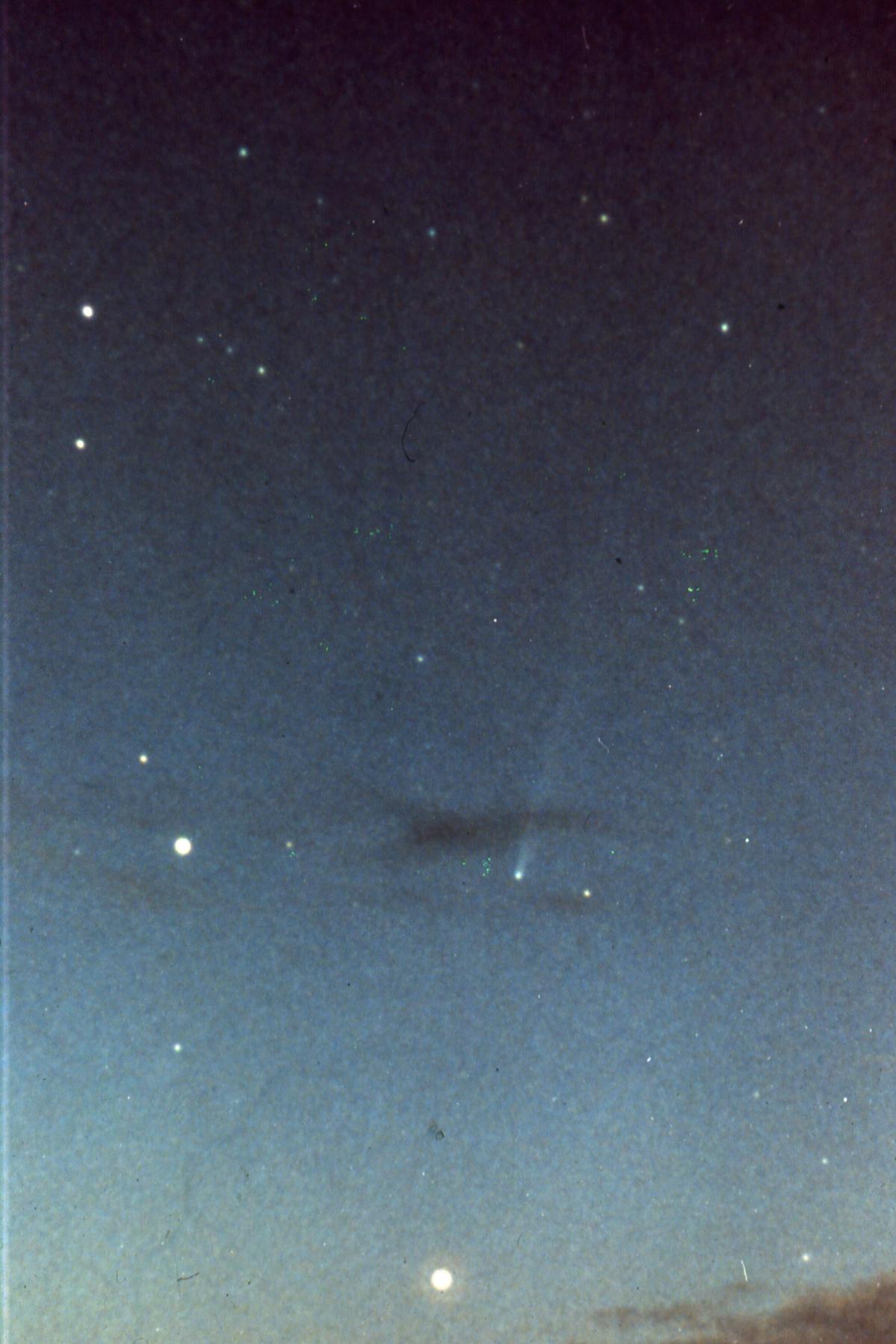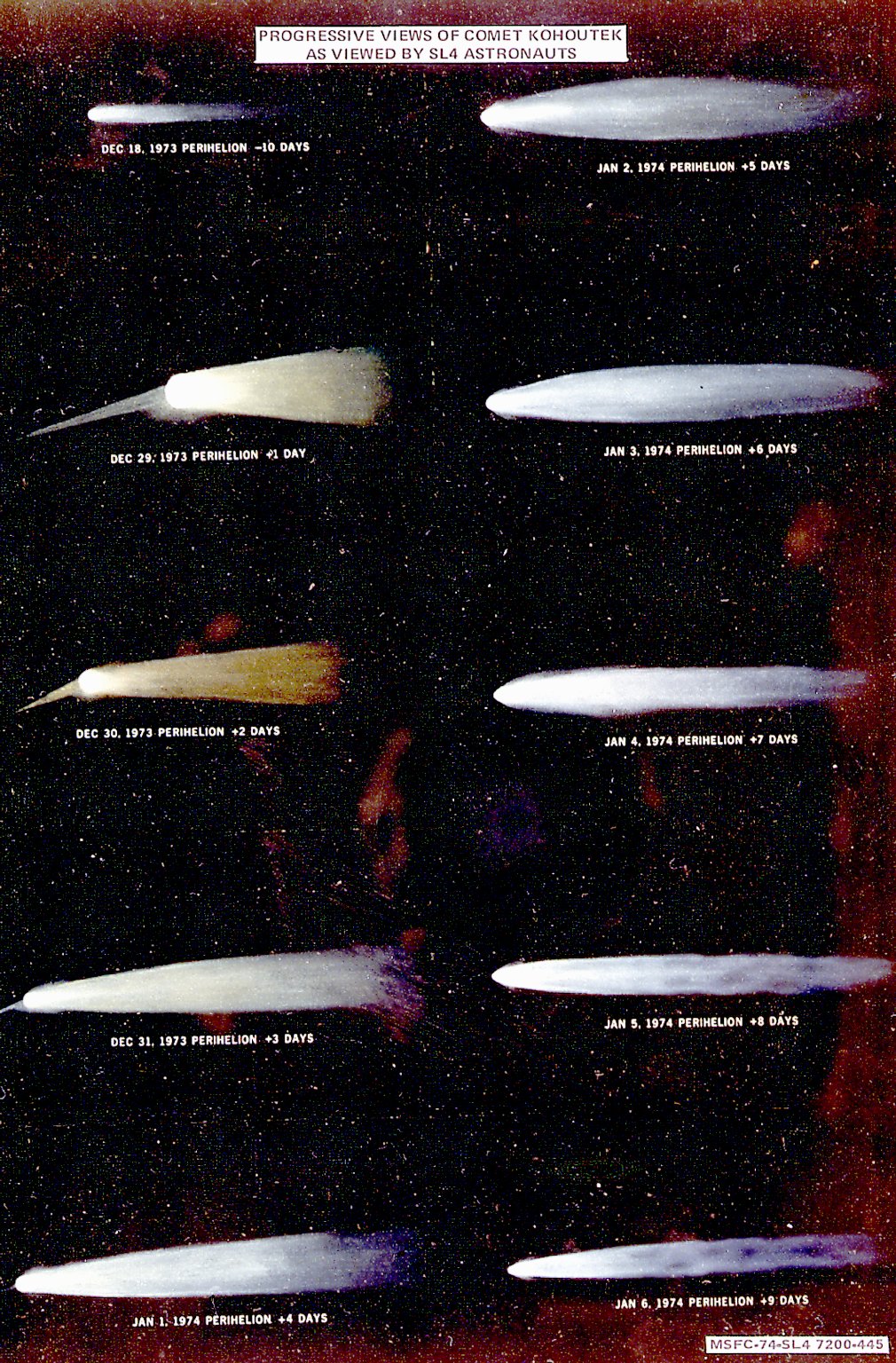When Will the Kohoutek Comet Appear Again

Perihelion: 1973 December 28.43, q = 0.142 AU
T his comet's story starts almost two years before its actual discovery when Brian Marsden (at the IAU's Central Bureau for Astronomical Telegrams ) performed some orbital calculations of the long-lost periodic Comet 3D/Biela (a previous " Come t of the Week "). The comet had not been seen since the mid-19 th Century and had long been thought as having disintegrated, however, Marsden calculated that if there was any surviving fragment information technology might laissez passer close to Earth in late 1971. Despite several searches, nada was found, which reinforced the overall consensus that Comet Biela had indeed completely disintegrated.
I of the people who had conducted searches for Comet Biela in late 1971 was the Czech astronomer Lubos Kohoutek, at the Hamburg Observatory in Germany. While he found no trace of the comet, he did nevertheless discover several previously-unknown asteroids, some of which were in favorable locations for recovery in early 1973. While attempting to recover these, Kohoutek discovered ii comets, the 2nd of these being a xvi th -magnitude object in western Hydra that first appeared on a photograph taken on March vii – my 15 thursday altogether, incidentally.
This detail comet was located at a heliocentric altitude of 4.75 AU at the time of its discovery, merely in one case orbital calculations revealed that it was over nine months away from perihelion passage which would take place at the very small heliocentric distance of 0.xiv AU, excitement began to build chop-chop within the astronomical community, as it appeared likely that a truthful " Great Comet ," perhaps even the "Comet of the Century," was on the fashion in. Some of the initial forecasts, in fact, suggest ed a tiptop effulgence as bright every bit magnitude -10, and fifty-fifty though these were later on "downgraded" t o about magnitude -3 or -4, this still nevertheless indicates a very bright comet, and the world waited . . .
Comet Kohoutek had brightened to nigh 14 thursday magnitude by the time information technology disappeared into evening twilight in early May. When information technology emerged into the morning heaven during the latter role of September information technology was close to 11 th magnitude, somewhat fainter than expected, and while it brightened steadily after that, it did and then more slowly than was expected. It became visible to the unaided eye during late November and was nearly 4 th magnitude, with a tail a few degrees long, in early December, but was only about 3 rd magnitude when information technology disappeared into the dawn a few days after mid-month.

Effectually the time of its perihelion passage, Comet Kohoutek was besides close to the sun to be visible from the ground, but it was detected rather easily from infinite. It appears to have undergone an outburst in brightn ess right around perihelion, as images taken by coronagraphs aboard NASA'southward Skylab space station and aboard the Orbiting Solar Observatory 7 ( OSO-7 ) satellite suggest it may take been as bright as magnitude -3. Astronauts aboard Skylab and aboard the Soviet Union's Soyuz 13 mission observed it, and according to the Skylab astronauts it was as vivid as magnitude -2 the solar day after perihelion, with a singled-out anti-tail , although it faded somewhat rapidly and the anti-tail all just disappeared over the subsequent days, even though the main tail grew longer.
The comet was perhaps nigh magnitude 0 when it outset became visible in the evening heaven right at the very end of December but had faded to 2 nd magnitude by the time it became widely observed during the outset calendar week of January 1974. The tail reached a maximum length of ab out xv degrees around mid-month – around the time of closest approach to World, 0.81 AU – but the comet itself dropped below naked-center visibility past the end of January. Information technology was followed telescopically until Apr, and after conjunction with the sun was photographed for one last time in early November, past which time its heliocentric distance had increased to 5 AU and it had faded to magnitude 22.
Although Comet Kohoutek did become a relatively decent naked-eye object when viewed from dark rural sites, it clearly was not the "Comet of the Century" that some of the initial forecasts suggested. A significant part of the reason for this is that Comet Kohoutek was a beginning-time visitor from the Oort Deject , and every bit was discussed in the " Special Topics " presentation on "Great Comets," such objects tend to be unusually bright and active when at larger heliocentric distances but this activity level will ofttimes slow downwards dramatically as they arroyo perihelion. Indeed, compared to some other first-time Oort Deject comets that accept appeared since and so, Comet Kohoutek's functioning wasn't all that poor.
While it might not accept been a "Bang-up Comet," Comet Kohoutek was still a rewarding and productive comet from a scientific perspective. Information technology was, for example, the first comet to be observed by an interplanetary spacecraft, equally NASA's Mariner x mission obtained ultraviolet observations of information technology while en route to Venus. It was besides the offset comet to be extensively observed in the radio part of the electromagnetic spectrum, and among other substances, organic molecules like methyl cyanide and hydrogen cyanide were detected inside of a comet for the first time.
The general public, certainly, which had been expecting the " Comet of the Century," was to a big extent profoundly disappointed, and fifty-fifty today Comet Kohoutek is often associated with the cometary equivalent of a "fizzle." While part of this was due to the comet'due south slower rate of brightening due to its existence a first-time visitor from the Oort Deject, a non-trivial part of this is also due to widespread over-hyping in the popular media, and the ignoring of the more conservative predictions once astronomers started making those. The comet ended up being featured quite a bit in the popular media of the time, including within published stories, tv programs, music, and fifty-fifty within comic strips, and at to the lowest degree i religious cult in the U.Southward. incorporated its advent into their beliefs. Now that information technology has been "broken in," so to speak, maybe it might put on a amend evidence to anyone who is effectually to see it when it returns 75,000 to 80,000 years from at present.
More from Week 53:
This Calendar week in History Special Topic Free PDF Download Glossary
Ice and Stone 2020 Home Page
Source: https://www.rocketstem.org/2020/12/27/ice-and-stone-comet-of-week-53/
0 Response to "When Will the Kohoutek Comet Appear Again"
Publicar un comentario